Discover 11 hidden attractions, cool sights, and unusual things to do in Tombstone (United States). Don't miss out on these must-see attractions: Boot Hill, Boothill Graveyard, and Tombstone Courthouse State Historic Park. Also, be sure to include O.K. Corral in your itinerary.
Below, you can find the list of the most amazing places you should visit in Tombstone (Arizona).
Table of Contents
Boot Hill

Cemetery. Boot Hill, or Boothill, is the given name of many cemeteries, chiefly in the Western United States. During the 19th and early 20th century it was a common name for the burial grounds of gunfighters, or those who "died with their boots on".[1]
Address: Highway 80 W, Tombstone
Boothill Graveyard
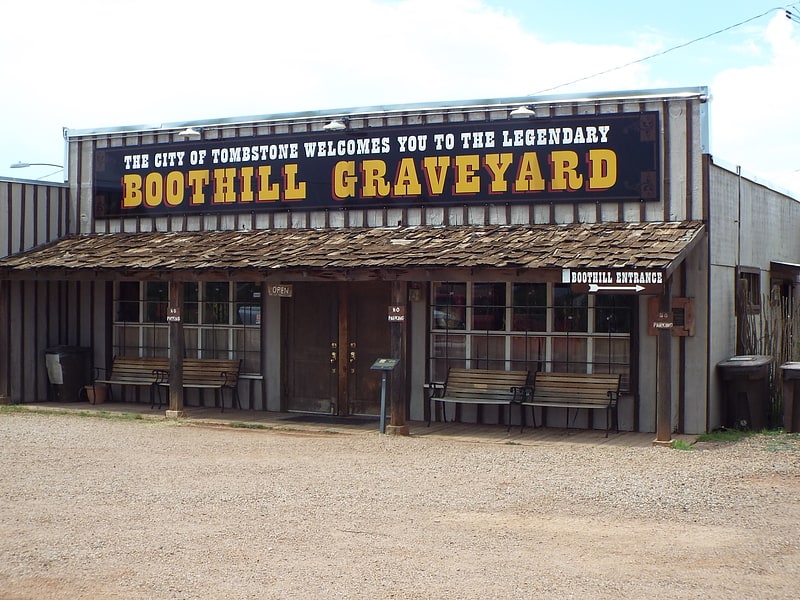
Graveyard. Boothill Graveyard is a small graveyard of at least 250 interments located in Tombstone, Cochise County, Arizona. Also known as the "Old City Cemetery", the graveyard was used after 1883 only to bury outlaws and a few others. It had a separate Jewish cemetery, which is nearby.
"Boot Hill" refers to the number of men who died with their boots on. Among a number of pioneer Boot Hill cemeteries in the Old West, Tombstone is among the best-known, and it is one of the city's most popular tourist attractions.[2]
Tombstone Courthouse State Historic Park
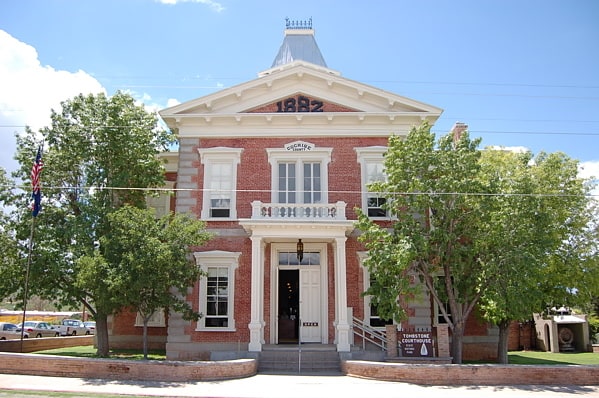
Museum in Tombstone, Arizona. Tombstone Courthouse State Historic Park is a state park of Arizona in the United States. Located in Tombstone, the park preserves the original Cochise County courthouse. The two-story building, constructed in 1882 in the Victorian style, is laid out in the shape of a cross and once contained various county offices, including those of the sheriff, recorder, treasurer, and the Board of Supervisors as well as courtrooms and a jail. Inside, the courthouse contains a museum with numerous artifacts from the town's history while outside, a replica gallows has been constructed in the courtyard to mark the spot where seven men were hanged for various crimes. The park was one of the first to be designated as a state park and in 1959 was the first to open following the 1957 establishment of the Arizona State Parks Board.[3]
Address: 223 East Toughnut Street, 85638 Tombstone
O.K. Corral

Historical landmark in Tombstone, Arizona. The O.K. Corral was a livery and horse corral from 1879 to about 1888 in the mining boomtown of Tombstone, Arizona Territory, in the southwestern United States near the border with Mexico.
Despite its association with the Gunfight at the O.K. Corral, the historic gunfight did not take place within or next to the corral on Allen Street, but in a narrow lot on Fremont Street, six doors west of the rear entrance to the corral. The lot was between Harwood's home and C. S. Fly's 12-room boarding house and photography studio.
The 1957 film Gunfight at the O.K. Corral made the shootout famous and the public was incorrectly led to believe it was the actual location of the altercation. Despite the historical inaccuracy, the corral is marketed as the location of the shootout, and visitors can pay to see a re-enactment of the gunfight. The corral is now part of the Tombstone Historic District.[4]
Tombstone Epitaph
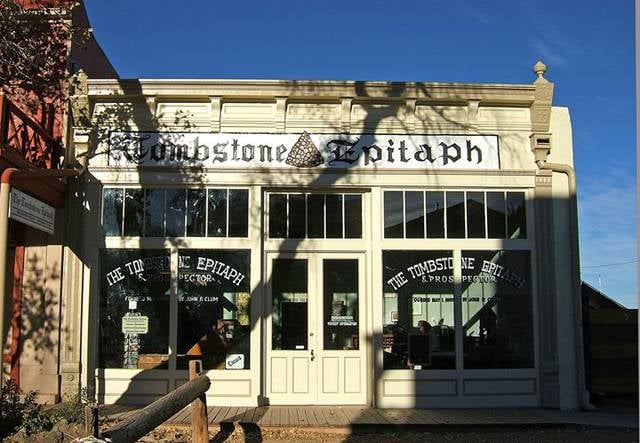
Historical place, Museum, History museum
Address: 9 S. 5th St., 85638 Tombstone
Bird Cage Theatre
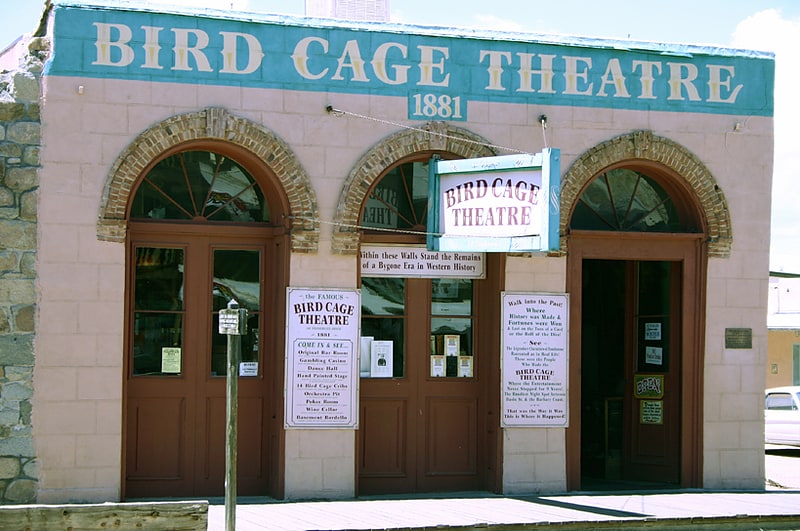
Theater in Tombstone, Arizona. The Bird Cage Theatre was a theater in Tombstone, Arizona. It operated intermittently from December 1881 to 1894. When the silver mines closed, the theatre was also closed in 1892. It was leased as a coffee shop starting in 1934.[5]
Address: 6th and Allen Street, 85638 Tombstone
Sacred Heart Church

Catholic church in Tombstone, Arizona. Sacred Heart Church is a historic Roman Catholic church at 516 Safford Street in Tombstone, Arizona, United States. It was built in 1881, purportedly with support by Nellie Cashman, an Irish immigrant who had been in the United States since age five. The church was listed on the National Register of Historic Places in 2002. The church is part of the Roman Catholic Diocese of Tucson.
Cashman was a noted miner and local businesswoman owning a hotel /restaurant, who also worked as a nurse. She was said to have provided spiritual support to the convicted killers of the Bisbee Massacre, and to have prevented a public spectacle of their execution in Tombstone.[6]
The Gunfight Palace
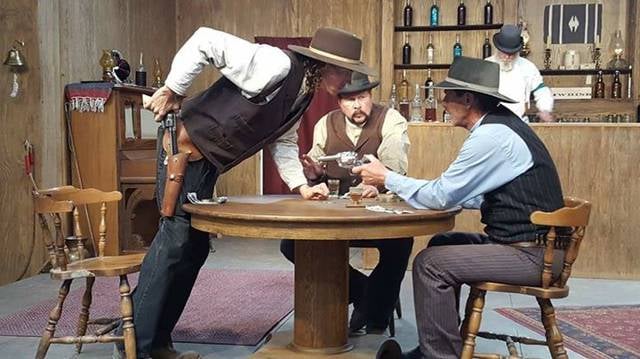
Concerts and shows, Palace
Address: 524 E Allen Street, 85638 Tombstone
Big Iron Shooting Gallery

Shooting range, Museum, Art gallery
Address: 519 E Allen Street, 85638 Tombstone
St. Paul's Episcopal Church
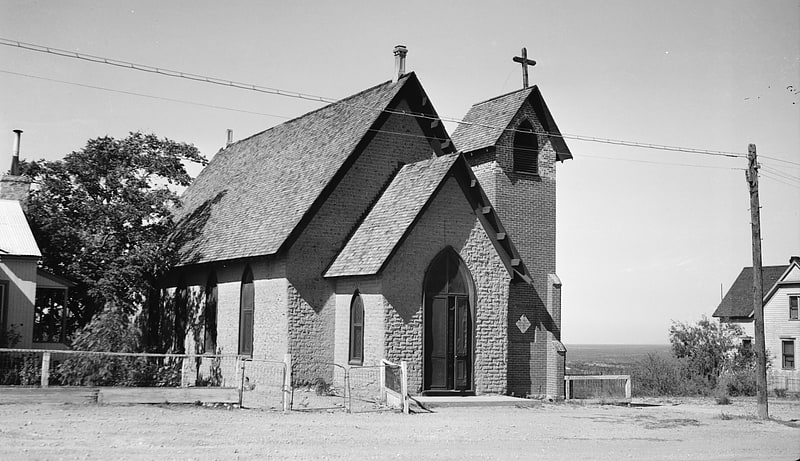
Episcopal church in Tombstone, Arizona. St. Paul's Episcopal Church is a historic Episcopal church at Safford and 3rd Streets in Tombstone, Arizona, United States. It is the oldest Protestant church in Arizona. It is part of the Episcopal Diocese of Arizona.
The Gothic Revival style church and bell tower were constructed in 1882.
The building was added to the National Register of Historic Places in 1971.[7]
Schieffelin Hall
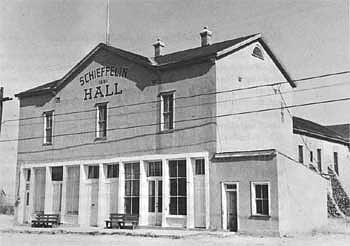
Museum in Tombstone, Arizona. Schieffelin Hall is a building from the American Old West in Tombstone, Arizona Territory, the largest standing adobe structure still existent in the United States southwest. It was built in 1881 by Albert Schieffelin, brother of Tombstone founder Ed Schieffelin, and William Harwood as a first class opera house, theater, recital hall, and a meeting place for Tombstone citizens.[8]